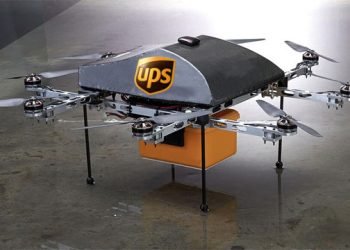By Eva Richardson | Published on April 4, 2025
The global logistics sector is undergoing a technological renaissance, propelled by the ever-rising demands of e-commerce and an unrelenting race toward faster, more efficient deliveries. Once the preserve of futuristic factories and high-tech warehouses, automation is now at the heart of logistics transformation, with market analysts projecting a dramatic rise in valuation over the next decade.
According to new data, the logistics automation market is expected to grow from $78.2 billion in 2024 to $212.81 billion by 2032, registering a compound annual growth rate (CAGR) of 13.3%, as reported by Fortune Business Insights. This explosive growth underscores how automation is fast becoming the core operating principle in a global supply chain under pressure to deliver more with less.
A New Era of Logistics Efficiency
At the center of this transformation are technologies like robotics, artificial intelligence (AI), machine learning, and the Internet of Things (IoT)—each playing a distinct yet interconnected role in shaping a next-generation logistics infrastructure.
“Speed is no longer just a competitive advantage—it’s a consumer expectation,” said Laura Miles, a senior automation strategist at a U.S.-based fulfillment tech firm. “The only way to meet those expectations at scale is through automation that can operate with precision, 24/7.”
Take Amazon, for example. The company now deploys over 750,000 autonomous robots in its fulfillment centers globally, working in tandem with human employees to sort, retrieve, and pack orders. These robotic systems, powered by AI and real-time data, have slashed order processing times and enabled same-day delivery models that were unthinkable a decade ago.
Warehouse Intelligence and Predictive Movement
Automation is no longer confined to basic picking and sorting tasks. Today’s smart warehouses use predictive analytics to manage inventory levels dynamically, optimize delivery routes in real time, and ensure product availability across omnichannel platforms. Drones and autonomous vehicles are being trialed for intra-logistics and last-mile delivery, signaling a shift toward machine-led mobility.
Meanwhile, IoT sensors are enhancing visibility across supply chains by enabling real-time tracking of shipments, container temperature, and route optimization—critical for industries such as pharma, perishables, and high-value electronics.
“Logistics automation is about empowering decision-making at every node of the chain,” said Miles. “That means fewer delays, fewer manual errors, and dramatically improved resource utilization.”
The Human Impact: Reskilling for the Digital Warehouse
While automation promises significant cost savings and efficiency gains, its rapid deployment is raising concerns about workforce displacement, particularly in warehousing and retail sectors. In the UK, retailers have begun replacing entry-level packing jobs with robotic arms and AI-powered vision systems, according to a report from The Guardian.
However, industry leaders are pushing a reskilling-first approach, noting that new roles in programming, systems integration, and robotics maintenance are on the rise.
“The future of work in logistics isn’t disappearing—it’s evolving,” said Chris Lamont, Director of HR at a multinational 3PL provider. “We need to invest in human capital just as much as we invest in infrastructure.”
Investment Momentum and Regional Growth
Investors are also betting big on logistics automation. Venture capital and corporate spending are surging across North America, Europe, and Asia-Pacific, where leading warehouse developers are integrating automation into new builds by default.
In parallel, retail giants and 3PLs are entering long-term partnerships with robotics firms, while public-private initiatives are emerging to support automation pilot projects in strategic freight corridors.
The U.S., Germany, China, and India are currently leading the way, with government support increasingly focused on digital logistics as a pillar of national competitiveness.
Looking Ahead: From Optimization to Orchestration
As the market matures, experts predict the next phase of logistics automation will be defined by orchestration rather than just optimization—where AI-powered platforms synchronize every element of the supply chain, from sourcing to final-mile delivery, through a unified digital brain.
By 2032, logistics automation won’t just be a tactical solution to labor shortages or rising e-commerce volumes. It will be the strategic infrastructure upon which fast, resilient, and sustainable global supply chains are built.























